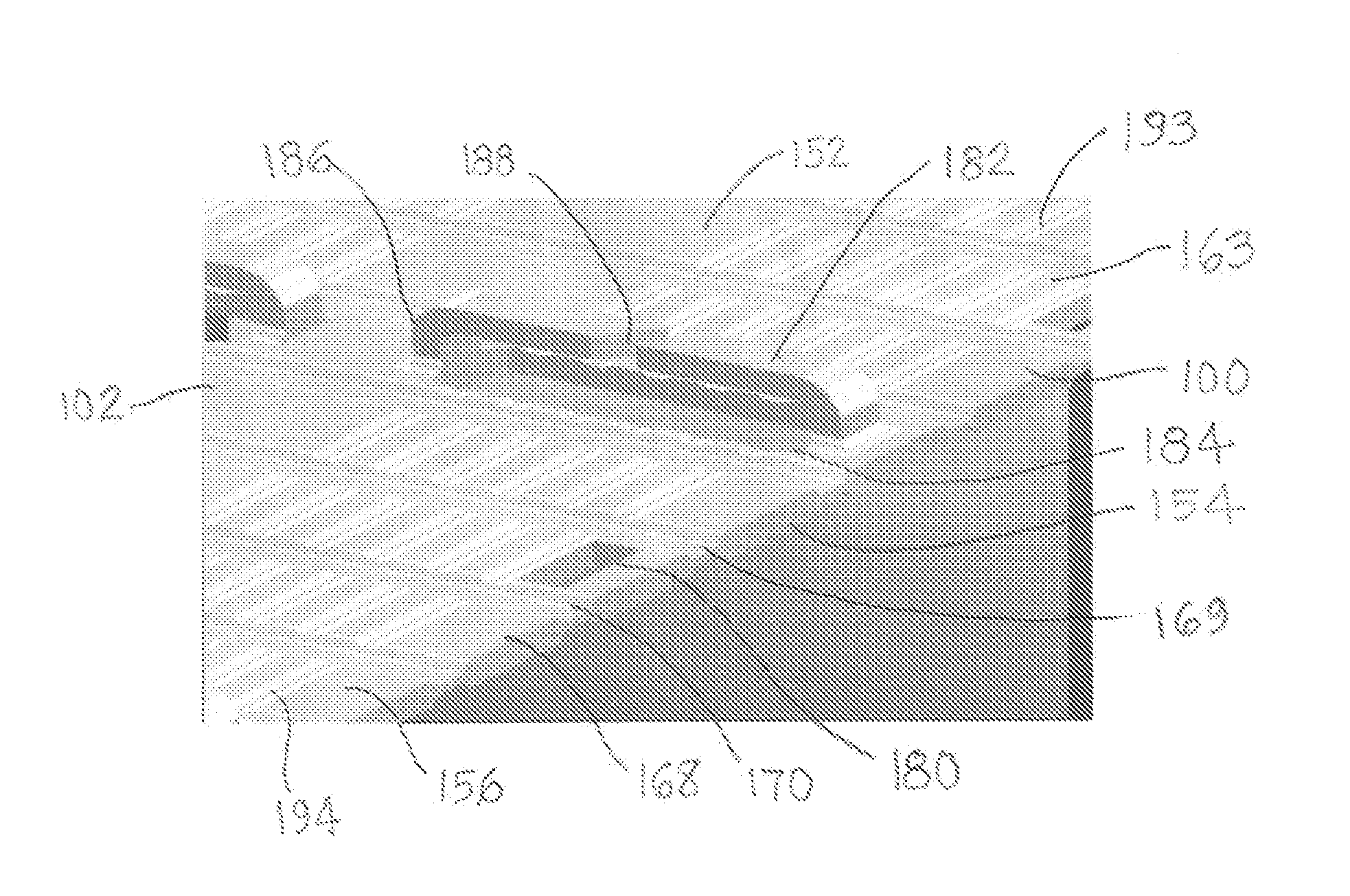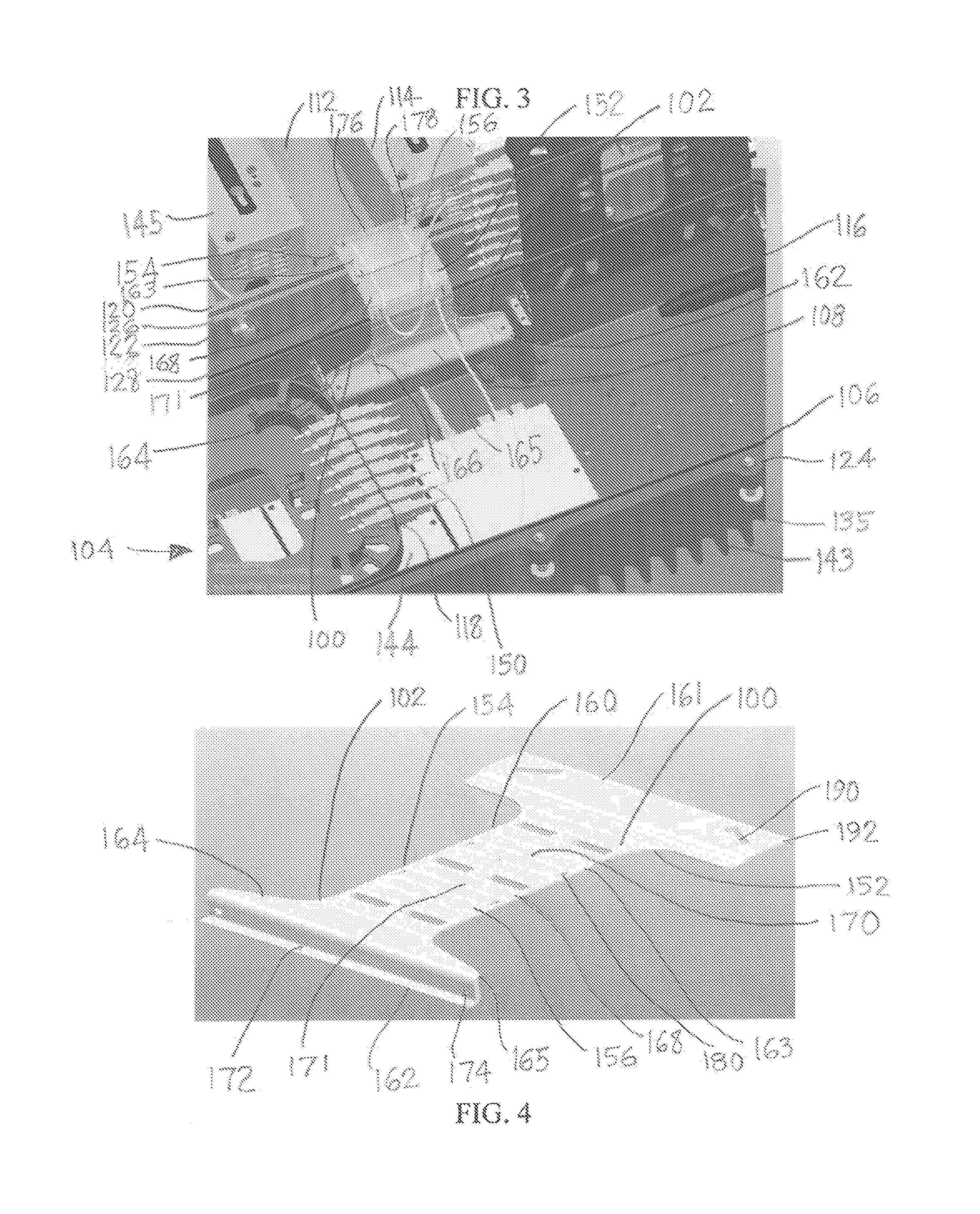Optical fiber management bridge
a technology of optical fiber and management bridge, applied in the field of broadband networks, can solve the problems of limiting the bandwidth and length of the link, affecting the transmission distance of fiber-optic communication systems, and often high cost of multi-mode fibers, etc., and achieves the effect of being effective, economical and durabl
- Summary
- Abstract
- Description
- Claims
- Application Information
AI Technical Summary
Benefits of technology
Problems solved by technology
Method used
Image
Examples
Embodiment Construction
[0038]As shown in FIGS. 1-6 in the drawings, an optical fiber management bridge 100 can provide an optical hinge assembly 102 for use with a broadband network 104 comprising a hybrid fiber-coaxial (HFC) broadband access network (BAN) 106 with optical fibers 108 and coaxial cables 110 for providing digital communications, such as: digital television, high definition television (HDTV), digital video, digital video streaming, video on demand (VOD), data transmission, internet communications, radio frequency (RF) communications, telephone communications, computer communications, telecommunications, or combinations of any of the preceding. The optical fibers can comprise: single mode optical fibers, multiple mode optical fibers, fiber optic cables, fiber jumpers, or combinations of any of the preceding optical fibers.
[0039]The BAN can include a HFC optical module 112 (FIGS. 1-3) which can provide an electronics communications device with an electronics package (e-pack) 114 in a container...
PUM
 Login to View More
Login to View More Abstract
Description
Claims
Application Information
 Login to View More
Login to View More - R&D
- Intellectual Property
- Life Sciences
- Materials
- Tech Scout
- Unparalleled Data Quality
- Higher Quality Content
- 60% Fewer Hallucinations
Browse by: Latest US Patents, China's latest patents, Technical Efficacy Thesaurus, Application Domain, Technology Topic, Popular Technical Reports.
© 2025 PatSnap. All rights reserved.Legal|Privacy policy|Modern Slavery Act Transparency Statement|Sitemap|About US| Contact US: help@patsnap.com



